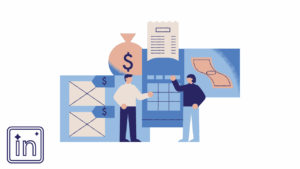In today’s business environment, organizations are under constant pressure to increase productivity while cutting operational costs. Rising labor expenses, supply chain disruptions, and administrative inefficiencies make it harder to stay profitable using traditional methods alone. Manual optimization, while once sufficient, can no longer keep pace with the complexity of modern operations. In this article, we’ll learn all about AI-driven cost optimization and how intelligent automation reduces business expenses.
Artificial intelligence is emerging as the solution to this growing challenge. Far from being a futuristic concept, AI is a proven tool that helps companies identify hidden inefficiencies, automate repetitive work, and make smarter, data-driven decisions. Intelligent automation is reshaping cost management, allowing businesses to scale while maintaining lean operations.
The Connection Between AI and Cost Reduction
AI reduces costs not simply by automating processes, but by continuously learning from data to improve how those processes run. It can process vast amounts of information faster and more accurately than humans, uncovering inefficiencies that might otherwise go unnoticed.
For instance, AI can forecast demand with exceptional precision, preventing overproduction and inventory waste. It can analyze employee schedules to optimize workforce utilization. Or detect anomalies in financial data before they escalate into costly issues. By combining automation with predictive insight, AI helps businesses operate efficiently, proactively, and intelligently, turning data into measurable savings.
Key Areas Where Intelligent Automation Reduces Expenses
The financial impact of AI adoption extends across nearly every department:
- Administrative operations. AI automates tasks like reporting, document processing, and scheduling, reducing the time employees spend on manual work.
- Customer service. Intelligent chatbots handle routine inquiries, decreasing support costs while maintaining rapid response times.
- Predictive maintenance. Machine learning models detect equipment wear and prevent downtime, saving both repair and production costs.
- Supply chain and logistics. AI optimizes routes, forecasts stock levels, and coordinates deliveries, minimizing fuel consumption and storage fees.
- Marketing and sales. Predictive algorithms refine targeting, reduce advertising waste, and improve conversion efficiency.
These examples show that intelligent automation drives sustainable cost reduction rather than one-time savings.
How AI Works to Optimize Costs in Practice: Automation Reduces Business Expenses
The process of AI-driven cost optimization involves multiple interconnected steps that work together to identify inefficiencies. So, take corrective action, and improve performance over time.
- Data Collection and Integration
AI systems collect information from various business sources, ERP platforms, CRM systems, production sensors, and transaction databases, building a complete operational picture.
Example: a manufacturing firm integrates IoT data from factory machines with its ERP system to analyze downtime patterns and maintenance schedules. - Analysis and Pattern Recognition
Machine learning algorithms examine historical data to detect trends, bottlenecks, and recurring inefficiencies.
Example: in retail, AI analyzes sales data and supplier performance to predict overstock or stockouts, adjusting orders before problems occur. - Action and Automation Reduces Business Expenses
Once patterns are identified, the system executes targeted actions, reallocating resources, adjusting inventory, or optimizing workflow sequences automatically.
Example: an e-commerce platform uses AI to automatically redistribute digital advertising budgets to high-performing channels, reducing marketing spend while increasing ROI. - Continuous Learning and Refinement
Each cycle of data analysis improves the system’s understanding, allowing it to make faster, more accurate decisions over time.
Example: a logistics company’s AI model learns from route efficiency data and continuously refines delivery planning, lowering fuel and labor costs month after month.
Through this iterative learning process, AI becomes a self-optimizing mechanism that constantly enhances cost efficiency across all operations.
Real Business Benefits Beyond Savings: AI-Driven Cost Optimization
The advantages of AI implementation go beyond cost reduction. Intelligent systems improve overall business agility and accuracy, allowing decisions to be made based on real-time insights rather than assumptions. Employees spend less time on routine tasks and more time on strategic initiatives that create value.
Additionally, AI contributes to sustainability by minimizing waste and optimizing energy use, an increasingly important factor for companies focused on ESG goals. These broader benefits strengthen competitiveness, enhance reputation, and improve long-term profitability.
How to Implement AI Cost Optimization in Your Business
Successful AI integration begins with a clear understanding of where inefficiencies exist and how they affect profitability. Businesses should identify measurable problem areas, such as manual reporting, logistics coordination, or customer support, and gather the data necessary for analysis.
Collaboration with an experienced AI development team ensures that every solution is tailored to your specific infrastructure and objectives. Implementation typically starts with a pilot project in one department, allowing measurable results before scaling across the organization.
Continuous monitoring is essential. As AI systems collect more data, their accuracy and effectiveness increase, leading to a compounding reduction in costs and stronger returns over time. Businesses that take a structured, data-driven approach gain a lasting advantage in operational efficiency.
AI-Driven Cost Optimization: Estimated ROI of AI Implementation
The cost of AI adoption depends on project scale, data readiness, and integration complexity. However, most organizations see a measurable return within six to twelve months after deployment.
Unlike traditional automation, AI systems continue to improve as they process more data, meaning savings expand over time rather than plateau. The initial investment quickly becomes self-sustaining, generating long-term value through continuous optimization and strategic insights.
Why Partnering with an Experienced AI Development Company Matters
Implementing AI is not simply a matter of purchasing software, it requires aligning technology with business goals, integrating data securely, and ensuring measurable results. A trusted AI development company bridges that gap by translating business needs into customized intelligent systems that deliver real financial outcomes.
Our team specializes in developing and integrating AI solutions tailored to business cost optimization. We design and deploy machine learning models, predictive analytics platforms, and intelligent automation systems that streamline operations, eliminate inefficiencies, and create measurable ROI. Every project begins with a deep assessment of your current processes, followed by solution design, implementation, and ongoing support.
Partnering with experienced AI developers ensures that automation doesn’t just function, it drives growth, reduces costs, and gives your organization a lasting technological edge in a competitive marketplace.
Conclusion
AI-driven cost optimization is no longer a distant goal, it’s a strategic necessity for modern business. By integrating intelligent automation into core operations, companies can significantly reduce expenses, enhance productivity, and achieve higher operational precision.
The organizations that begin this transformation today will not only see immediate financial benefits but also position themselves as leaders in the era of intelligent business management.
If your company is ready to explore how AI can reduce costs and accelerate growth, our team can design and implement solutions that deliver measurable results. Intelligent automation starts with a single decision, the decision to act.








